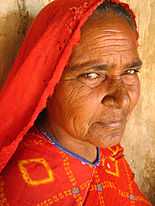Koli Christians

Part of a series on Kingdoms (Ikshvaku Dynasty ·
Mandhata |
Koli Christians are a religious subset of the Kolis, the indigenous people of the seven islands of Bombay East Indians, which now form part of the modern city of Mumbai. In 1989, there were approximately 9,000 Koli Christians, most of whom were fishermen, like their Hindu counterparts.[1] Koli Christians blend the customs and traditions of the Koli people with the beliefs of the Roman Catholic church. In accordance with Koli tradition, marriages among Koli Christians are typically arranged, and certain ceremonies are observed in common with Hindu Kolis, such as the Shakarpura (sugar) ceremony of betrothal, but Christian practices are also observed, including the conducting of the wedding in a church.[2] Although cross cousin marriage has been traditional practice among the Kolis, Koli Christians are discouraged from doing so by their religion.[3]
Most Koli Christians live in Koliwadas, where their social lives are overseen by a patil and his karbaris, or councillors.[1] Holding their position by right of inheritance, these people are collectively known as the jamat. The bulk of Koli Christians fish for a living, with their catches being taken to market in Mumbai by fishwives or agents.[4] In the past, middlemen contributed to the poverty of the group, exploiting the labor of the fishermen, but by 1989, more Koli Christians were marketing their catches themselves.
See also
- List of Kolis
| ||||||||||||||||||||||||||
Notes
References
- James, V. "Marriage Customs of Christian Son Kolis". Bombay: Institute of Indian Culture. Retrieved 19 November 2010.
- Narain, Dhirendra; University of Bombay. Dept. of Sociology; Indian Council of Social Science Research (1989). Research in sociology: abstracts of M.A. and Ph. D. dissertations completed in the Department of Sociology, University of Bombay. Concept Publishing Company. ISBN 978-81-7022-235-4.